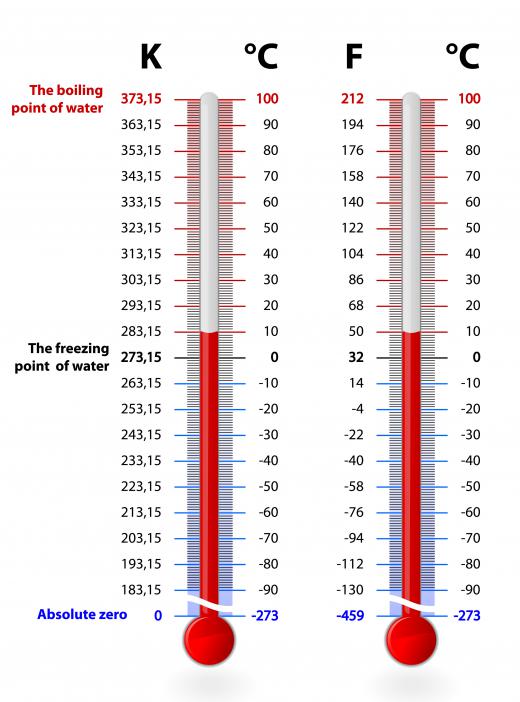What is Thermodynamics?
 Dee Saale
Dee Saale
Thermodynamics is the area of science that includes the relationship between heat and other kinds of energy. Thermodynamics was discovered and studied beginning in the 1800s. At that time, it was linked to and gained importance because of the use of steam engines.
Thermodynamics can be broken down into four laws. Although added to the laws of thermodynamics after the other three laws, the zeroth law is usually discussed first. It states that if two systems are in thermal equilibrium with a third system, then they are in thermal equilibrium with each other. In other words, if two systems are the same temperature as a third system, then all three are the same temperatures.

The first law of thermodynamics states that the total energy of a system remains constant, even if it is converted from one form to another. For example, kinetic energy — the energy that an object possesses when it moves — is converted to heat energy when a driver presses the brakes on the car to slow it down. There are often catch phrases to help people remember the first law of thermodynamics: “Work is heat, and heat is work.” Basically, work and heat are equivalent.

The second law of thermodynamics is one of the most basic laws in science. It states that heat cannot flow to a system at a higher temperature from a system at a lower temperature by its own volition. For such an action to occur, work must be done. If an ice cube is placed in a cup of warm water, the ice cube melts as the heat from the water flows into it. The end result is a cup of water that is slightly cooler. Ice cubes can only form if energy is used.
Another example of the second law only working with the addition of energy can be seen with an older refrigerator. In that case, the cooling of the inside of the refrigerator warms the outside of it. So, work is done and the work makes heat. The work is completed by the pump of the refrigerator.
The second law of thermodynamics also says that things can wear out. For example, if a brick house is left uncared for, it will eventually crumble from wind, rain, cold, and other weather conditions. However, if a pile of bricks if left unattended, it will never form a house, unless work is added to the mix.
The third law of thermodynamics states that the change in entropy of a system when it converts from one form to another gets close to zero as its temperature nears zero on the Kelvin scale. Zero on the Kelvin scale is the absolute lower limit to temperature – when atoms and molecules have the least possible energy. Entropy is defined as the availability of a system’s energy to do work. So, it follows that there is an absolute scale of entropy. Consequently, no real system can ever reach zero degrees on the Kelvin scale.
AS FEATURED ON:
AS FEATURED ON:












Discussion Comments
@LilDub -
Many scientists contributed to the field of thermodynamics, so there isn't really one specific scientist who is credited with the whole theory and the laws. It was a collaborative effort beginning in the middle of the 17th century. The jumping off point was the invention of the vacuum pump by Otto von Guericke. Robert Boyle used Otto's design to build an air pump and create Boyle's Law, which shows that volume and pressure are inversely proportional to one another.
Another scientist, James Watt, worked with steam engines and added important information on heat capacity and latent heat to the field of thermodynamics. Building on all of the above information, scientist Sadi Carnot published a definitive guide and is generally considered to be the "father of thermodynamics."
Which scientist gets the credit for this theory? Who is considered the "father of thermodynamics?"
Post your comments